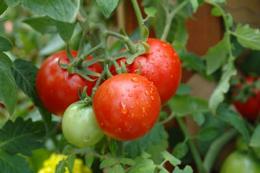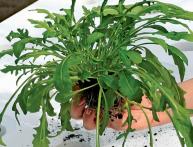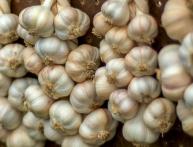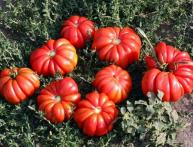Growing tomatoes in open ground

It seems that the busy season for gardeners has only recently ended. The pantries are still bursting with jars of delicious preparations, and we are again full of worries.
Growing tomatoes in open ground brings new challenges, and in February we are already starting to stock up on seeds.
In order for harvesting to become a sweet reward for hard, painstaking work, when growing tomatoes in open ground, you need to take into account the following features.
- Seed selection is a responsible process.
For open ground, varieties that do not require constant pinching and tying to a support are suitable.
These should be early ripening, weakly branching varieties with limited growth. - When growing seedlings, they must be hardened off in order to prepare them for planting in a permanent place.
- When choosing a planting location, you need to remember that tomatoes are heat- and light-loving plants. Therefore, the place should be sunny and well-warmed, with loose soil.
The space must be protected from strong winds. - You need to water the plants with warm water, avoiding drying out the soil. Lack of moisture will cause flowers and ovaries to fall off, and the fruits will subsequently burst.
- Don't forget to feed your pets.
The first fertilizing is carried out after 8-10 days with a mixture of organic and mineral fertilizer.
The next 2 feedings are carried out at intervals of 10-14 days with complex mineral fertilizer, combined with loosening the soil. - In open ground, tomatoes especially need disease prevention.
Warm garlic solution with potassium permanganate creates a protective film on the plant. - Growing tomatoes in open ground can bring not only pleasure, but also benefits. The main thing is not to rush to harvest. Let the fruits ripen on the bush. This way they will absorb more nutrients, sugars and vitamins.
Follow these simple rules, and then Senor Tomato will give you all the energy of the sun, which he carefully absorbed on sunny days.
Interesting information about the vegetable garden









Comments
Thanks for the good advice, I’ll definitely take it into account. Can you please tell me more about the seeds, which ones to take?
I have never made a garlic solution with potassium permanganate. What proportions should you take for this? How much garlic will it take? I don’t have my own, but the store-bought one is expensive. What kind of protective film does this solution create? What does it protect against?